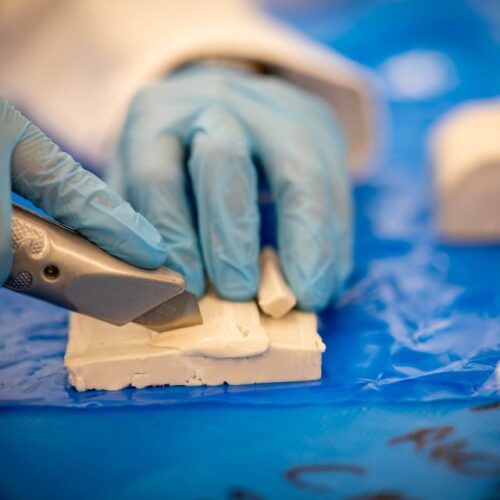There are two types of rubber used as a base for all types of rubber materials: natural and manufactured. Yes, there is a natural rubber, taken from the tree Hevea Brasiliensis, that is widely used in industry but there are also modern synthetic rubbers created by manufacturers. So, can rubber be recycled and just how important is rubber recycling? Is there an eco-friendly rubber? Continue reading our helpful guide to discover more about rubber recycling.
What is rubber recycling?
Unsurprisingly, tyres are the most common form of rubber waste. In order to recycle rubber, it first must be cleaned and broken down into smaller pieces, creating a more manageable size. The rubber is then placed into a granulator and transformed into crumb rubber (small fragmented pieces of rubber) to be used elsewhere.
Advantages and disadvantages of rubber recycling
The main advantage of recycled rubber is that it can ultimately help the planet and the environment. This is the main objective of recycling any material. Here are more advantages of rubber recycling:
Reduces illegal dumping –
Recycling rubber can have a positive impact on the environment by way of reducing illegal dumping. If rubber, or any other materials, are illegally dumped it can harm the environment, especially if near a lake or river.
Helps preserve the environment –
Recycling rubber reduces the demand on production of new rubber, ultimately helping the environment further. There are alternative uses for rubber that’s recycled, including astroturf, playground surfaces, non-slip mats, hospital floors, gardening products, and much more.
Unfortunately, there are actually some disadvantages of rubber recycling, and they are:
Recycling sites –
Depending on the location of where your rubber is recycled, storing them at recycling centres could actually be harmful to the environment. Some recycling centres have so much waste stored and piled that it can lead to a build-up of bacteria, disease and harmful gases.
Compromise on quality –
The rubber recycling process is still being developed and improved. This means that not all rubber that is recycled is being produced at an optimal standard, leading to a compromise in quality.
Is rubber eco-friendly and what types of rubber are there?
So, what is eco-friendly rubber? Simply put, eco-friendly rubber is natural rubber because it can be recycled. Eco-friendly rubber materials are much better for the environment, enhancing a greener future. So, what are the different types of rubber and are they eco-friendly?
Natural –
Natural rubber is made from latex, a runny, milky white liquid harvested and collected from the rubber tree (Para rubber tree). This plant helps remove and balance carbon dioxide from the air.
Synthetic –
Synthetic rubber has to go through a chemical process to develop the end product, which means there is use of petrochemicals. The most common effects are polyvinyl chloride (PVC), polyvinyl acetate (PVA), polychloroprene, and styrene-butadiene. Synthetic rubber products are not environmentally friendly.
Recycled –
Recycled rubber is a form of eco-friendly rubber. Instead of being thrown away to create mess with other materials, rubber recycling recreates the material for use as another product. Recycled rubber is made into things like tennis shoes and beach balls.
Reclaimed –
Reclaimed rubber is a form of discarded and rejected elastomer that has undergone a process called de-vulcanisation.
Eco-friendly properties of rubber
There are a handful of eco-friendly properties of rubber that can be recycled that make it good for the environment. They are:
Naturally-sourced –
Latex collected from rubber trees makes natural rubber products. The Para tree is also grown through sustainable methods, helping to balance the carbon dioxide in the atmosphere.
Sustainable –
The source, which is the tree, is renewable. If it were to stop producing latex, you can replant without any stress.
Non-toxic –
Natural rubber comes from a natural source which means that you won’t find any harmful chemicals in it, such as traces of petroleum, chemicals, and heavy metals.
Biodegradable –
Many companies derive natural rubber from natural/inorganic materials, and its products become biodegradable. It will decompose into essential elements through weathering without causing environmental damage.
Envirolast at Martin’s Rubber
Martin’s Rubber acknowledged that the disposal of manufactured rubber products can have a negative effect on the environment. As a result, they’re developing a way to recycle end-of-life products within their manufacturing, and it’s called Envirolast.
Envirolast is Martin’s Rubber’s way of committing to the development of sustainable materials in order to reduce the negative impact on our planet. They’re aiming to ensure that up to 50% of the material they use in products is eco rubber. Through rubber recycling they’re aiming to make a difference.
